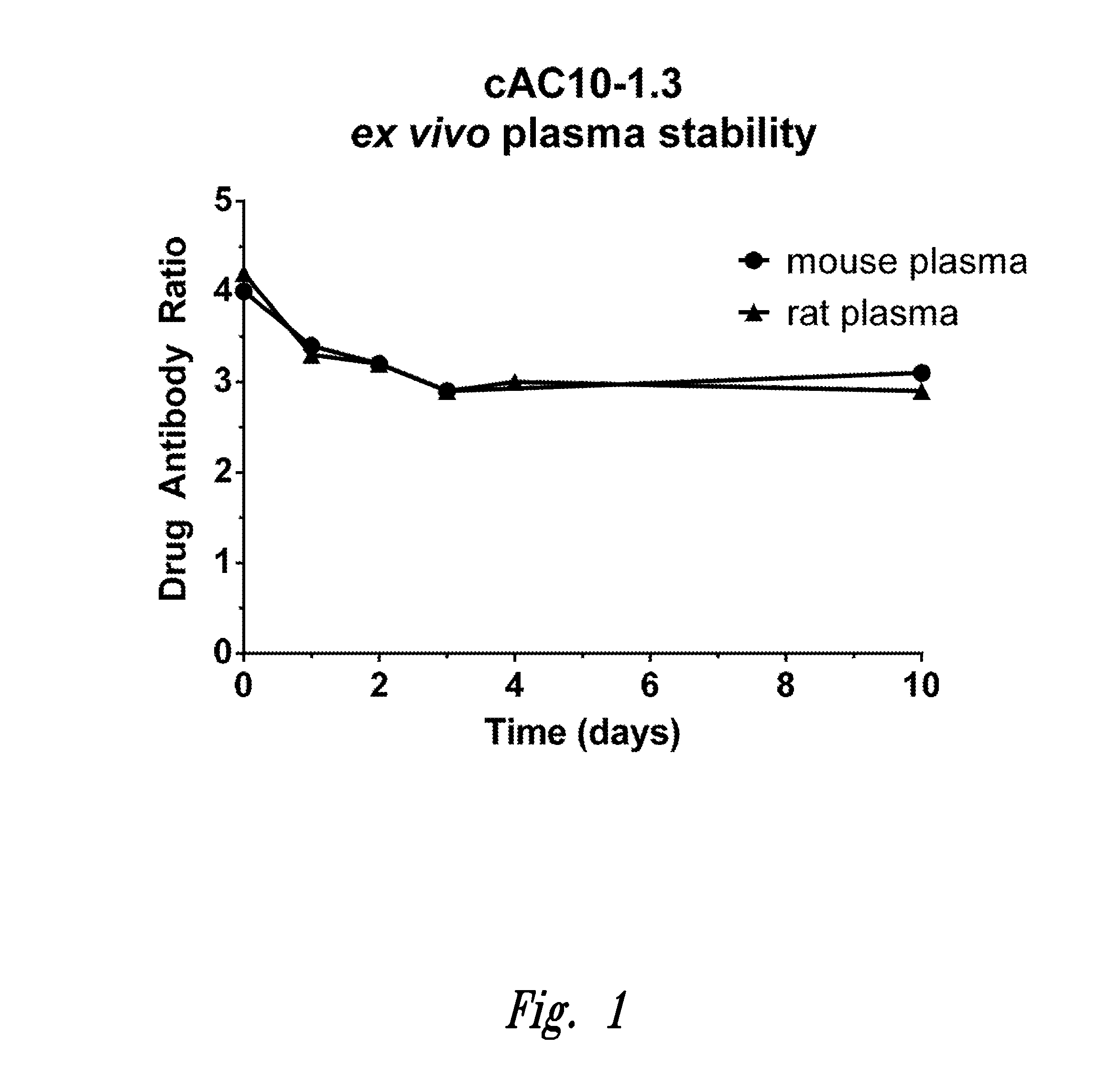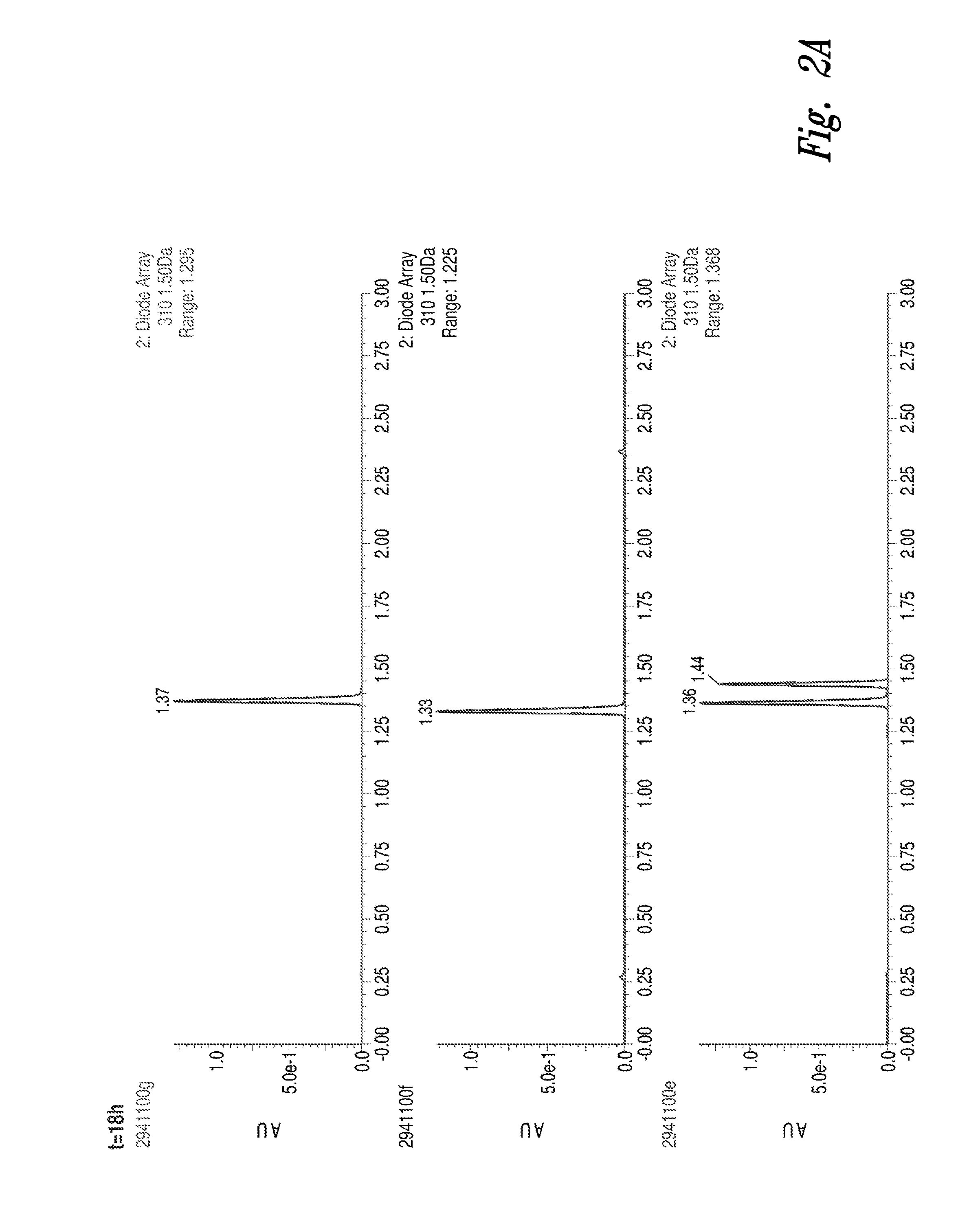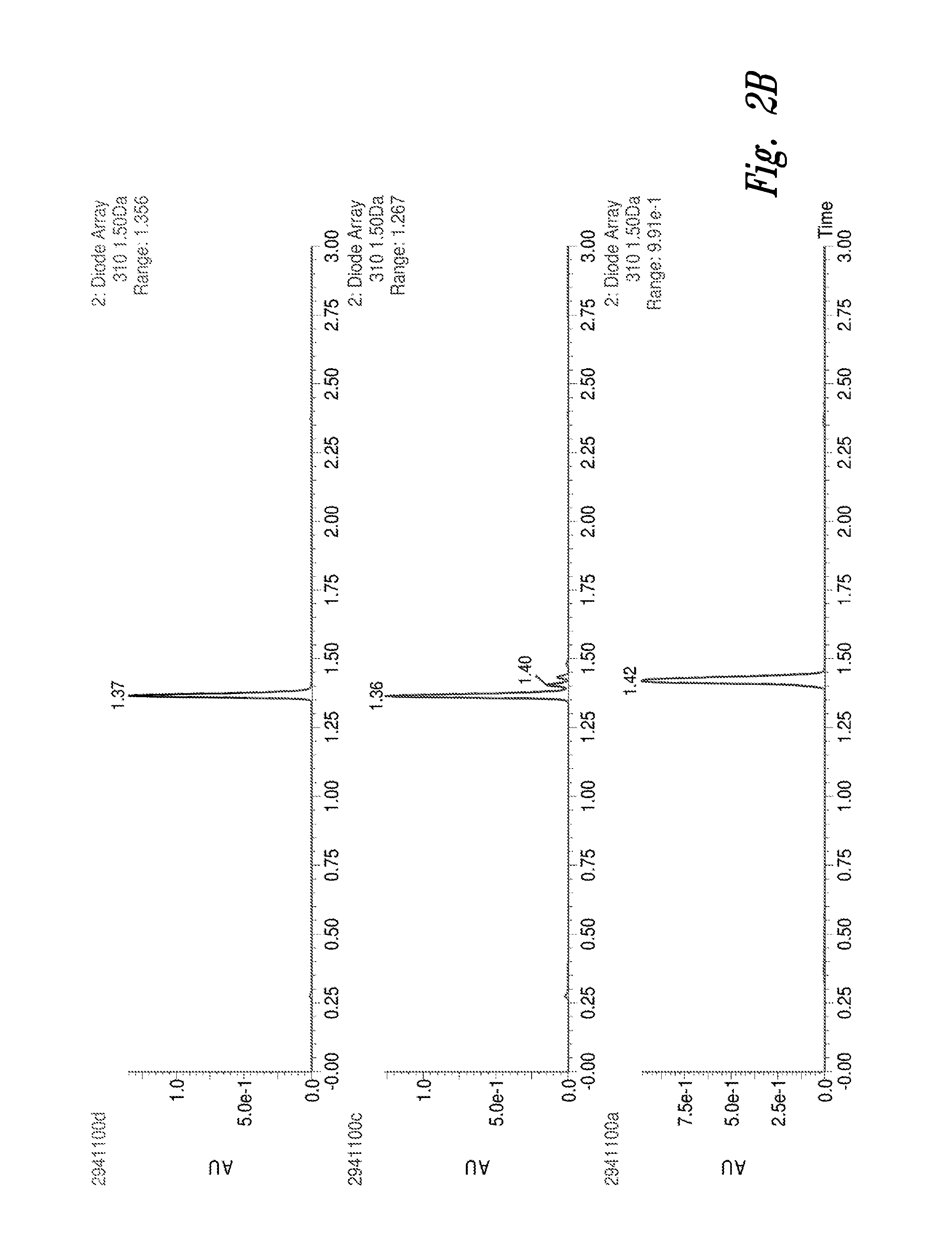Methylene carbamate linkers for use with targeted-drug conjugates
a technology of methylene carbamate and conjugate, which is applied in the direction of immunological disorders, medical preparations, antineoplastic agents, etc., can solve the problems of reducing the adc potency, negatively interfering with the activity profile of the drug, and certain drug classes without appropriate conjugation handles
- Summary
- Abstract
- Description
- Claims
- Application Information
AI Technical Summary
Benefits of technology
Problems solved by technology
Method used
Image
Examples
examples
Summary
[0637]Examples 1 and 2 describe alternative preparations of a Drug-Linker Compound having a Drug Unit (D) covalently attached to a methylene alkoxy carbamate unit of formula Ia′ wherein the Drug Unit is from auristatin E. The resultant Drug-Linker Compound has the generalized structure of formula V′:
[0638]wherein R and R′ are hydrogen and the activateable moiety X is —Y(W)— wherein —Y(W)— has the structure of formula XVId:
[0639]wherein the wavy line to the nitrogen heteroatom of the self-immolative Spacer Unit (Y) indicates covalent attachment to the Connector Unit (A) and the hash mark (#) indicates covalent attachment of the benzylic carbon of Y to the MAC Unit, wherein O* is the oxygen heteroatom from the hydroxyl functional group of free drug.
[0640]Example 3, 4 and 5 describes the synthesis of Drug-Linker Compounds wherein the Drug Units are from triptolide, everolimus and tacrolimus (FK-506), respectively, in which a hydroxyl functional group of free drug is used in conj...
example 1
Synthesis of an Auristatin E Drug-Linker Compound Comprising the MAC Linker Using the Curtius Rearrangement
Synthesis of (2S,3R,4S,5S,6S)-6-(2-(3-((((9H-fluoren-9-yl)methoxy)carbonyl)amino)propanamido)-4-((7S,8R,11R,12R)-12-((S)-1-((3R,4S,5S)-4-((S)-2-((S)-2-(dimethylamino)-3-methylbutanamido)-N, 3-dimethylbutanamido)-3-methoxy-5-methylheptanoyl)pyrrolidin-2-yl)-8,11-dimethyl-3,10-dioxo-7-phenyl-2,6,13-trioxa-4,9-diazatetradecyl)phenoxy)-5-(methoxycarbonyl)tetrahydro-2H-pyran-2,3,4-triyltriacetate (1.2) via Curtius Rearrangement
[0651]
[0652]To azido ketone 1.0 (30 mg, 37 μmol), synthesized from the corresponding free auristatin alcohol (for synthesis of 1.1 see Jeffrey et al., Org. Lett. (2010) 12:277) in of DMF (250 μmol) at RT was added 1.1 (90 mg, 120 μmol) to the solution followed by 5 μL, of dibutyl tin dilaurate. The reaction mixture was then stirred at 60° C. for 1 hour at which time LC / MS showed the reaction was complete. Subsequently, the reaction was directly purified by pre...
example 2
Synthesis of an Auristatin E Drug-Linker Compound Comprising the MAC Linker Via N-Chlormethylamine Synthesis
Synthesis of (2S,3R,4S,5S,6S)-2-(4-((chloromethyl)(ethyl)carbamoyl)oxy)methyl)-2-nitrophenoxy)-6-(methoxycarbonyl)tetrahydro-2H-pyran-3,4,5-triyl triacetate (1.5)
[0655]
[0656]To a solution of 1.4 (400 mg, 0.36 mmol) (for preparation of 1.4 see Bosslet et al., 1998, J. Med. Chem. 41:3572) in DCM (4 mL) was added paraformaldehyde (32 mg, 0.54 mmol) and TMSCl (0.212 mL, 1.1 mmol). The reaction was stirred for additional 2 hours at RT with monitoring by utilizing methanol as a diluent and following the formation of the methanol adduct by LC / MS. Subsequently, the reaction was filtered and dried in vacuo 450 mg of crude 1.5, which was then used in the subsequent reaction without further purification (see procedure from Barnes et al., 2009, Org. Lett. 11:273). MS (m / z) [M+H]+ calc for the methanol adduct C25H32N2O15 601.18. found 601.21.
Synthesis of (2R,3S,4R,5R,6R)-2-(4-((7S,8R,11R,1...
PUM
 Login to View More
Login to View More Abstract
Description
Claims
Application Information
 Login to View More
Login to View More - R&D
- Intellectual Property
- Life Sciences
- Materials
- Tech Scout
- Unparalleled Data Quality
- Higher Quality Content
- 60% Fewer Hallucinations
Browse by: Latest US Patents, China's latest patents, Technical Efficacy Thesaurus, Application Domain, Technology Topic, Popular Technical Reports.
© 2025 PatSnap. All rights reserved.Legal|Privacy policy|Modern Slavery Act Transparency Statement|Sitemap|About US| Contact US: help@patsnap.com



